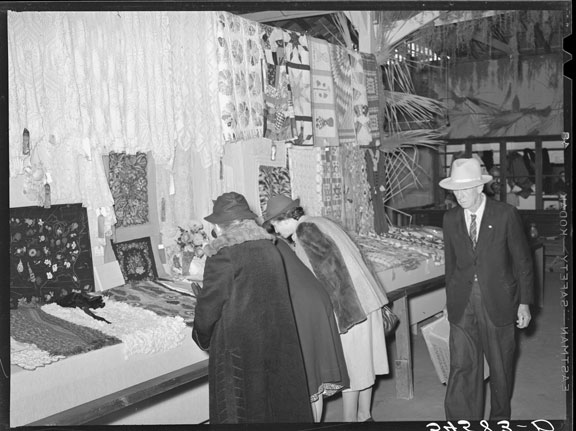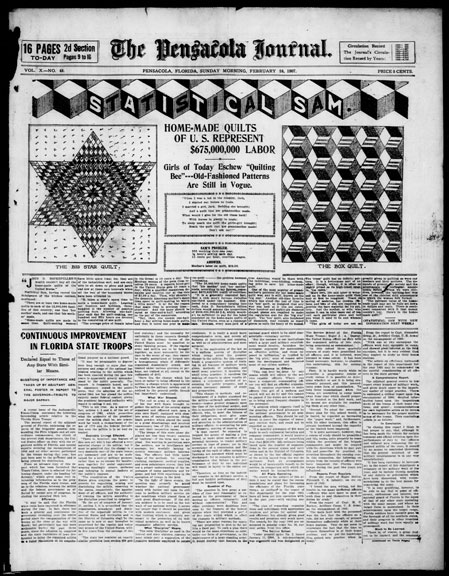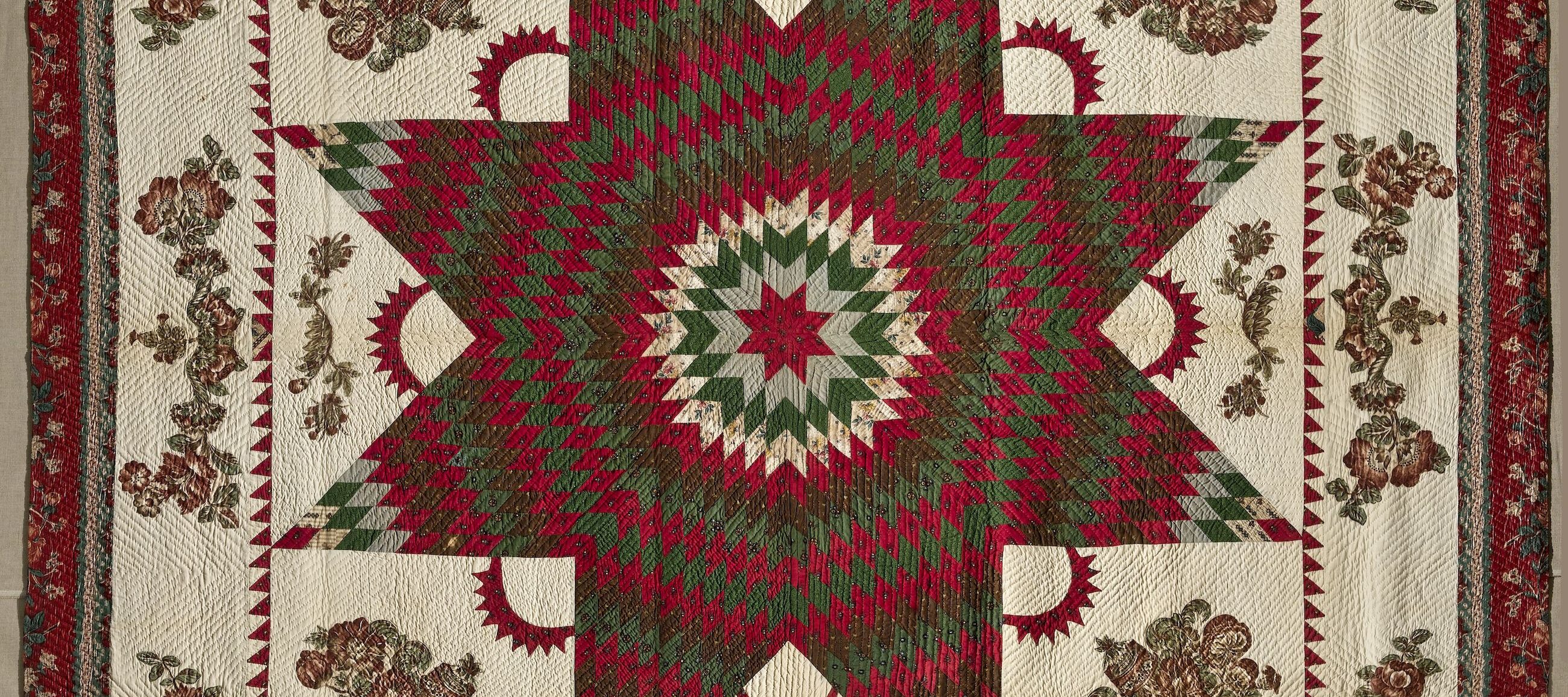Quilting has long been viewed nostalgically as a collaborative activity among women, but over time these pieces have also been created by groups or individuals with complex or dubious motivations. Often, true collaborations simply meant teamwork between groups of women to create quilts efficiently. Through quilting bees, women were able to gather, sew, and find social relief from their homes. The photograph in “Workt by Hand” of the Ladies’ Aid Society at Mt. Zion United Brethren shows the group proudly displaying their collective quilt with each of their signatures stitched into the fabric. This image shows the communal nature of the task and the shared sense of ownership the group had over the final product.

Fairs also provided a venue for quilters to connect. Sanitary Fairs were popular among women after the start of Civil War. Women volunteered their quilts both as charity to soldiers, and as goods to fundraise for war relief efforts. At other times, fairs were not so politically charged. In Russell Lee’s 1939 image titled Women looking at quilting and crocheting exhibit at Gonzalez County Fair, a cluster of women can be seen admiring the quilts displayed at a county fair. These fairs provided a space not only for leisurely gathering, but also for sharing and exchanging pattern ideas.

Yet in some cases, “collaboration” in quilting produced less equality and community among women and instead stressed the social hierarchy between them. In the “Value and Labor” section of “Workt by Hand”, it is mentioned that for many women, quilting was not merely a hobby, but a source of income. For instance, after the Civil War, African American seamstresses would create quilts that would then be attributed to white households.
This exploitation of quilt creators by quilt owners is highlighted in the book American Icons by Dennis Hall and Susan G. Hall, which tells of the controversy in the 1933 Sears and Roebuck quilt competition in the Chicago World Fair. Margaret Rogers Caden of Lexington, Kentucky, was awarded the grand prize of $1,000 for the intricate padding of her quilt. Unknown to the judges, however, although Caden had signed the entry documents stating the work was entirely her own, she in fact had hired four other Kentucky women to make the quilt for her. In the midst of the Great Depression, these four women had no means of protesting, for doing so would have meant losing their jobs. Situations like this dispel the notion that quilting, because of its feminine nature, was untouched by social corruption.
It is important to understand that quilting had a politics of its own. Historical images and photographs in “Workt by Hand”, on view at NMWA through April 27, help visitors situate the beautiful quilts on view within the quilters’ more complex social and economic contexts.
